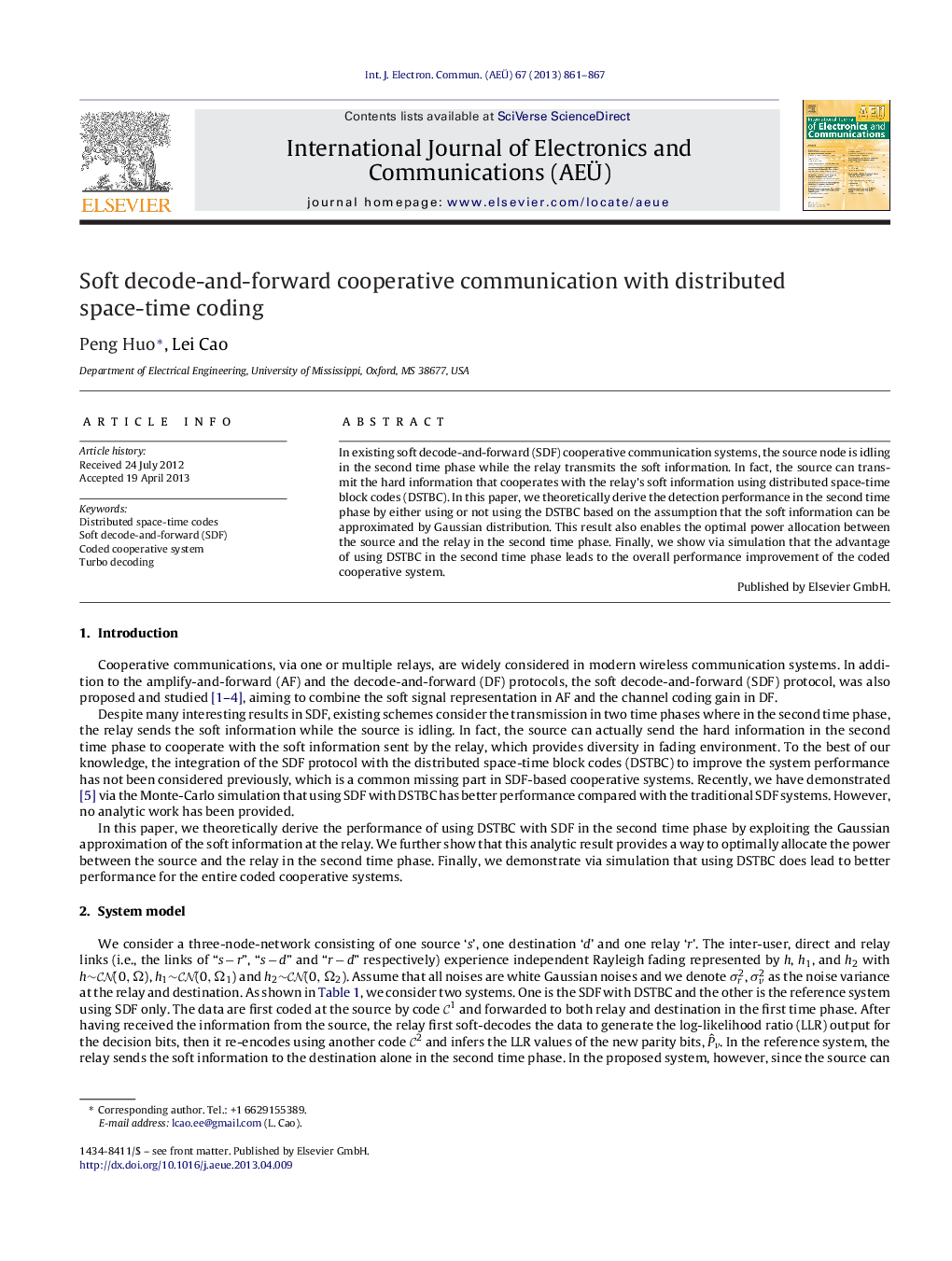| کد مقاله | کد نشریه | سال انتشار | مقاله انگلیسی | نسخه تمام متن |
|---|---|---|---|---|
| 446244 | 1443168 | 2013 | 7 صفحه PDF | دانلود رایگان |

In existing soft decode-and-forward (SDF) cooperative communication systems, the source node is idling in the second time phase while the relay transmits the soft information. In fact, the source can transmit the hard information that cooperates with the relay's soft information using distributed space-time block codes (DSTBC). In this paper, we theoretically derive the detection performance in the second time phase by either using or not using the DSTBC based on the assumption that the soft information can be approximated by Gaussian distribution. This result also enables the optimal power allocation between the source and the relay in the second time phase. Finally, we show via simulation that the advantage of using DSTBC in the second time phase leads to the overall performance improvement of the coded cooperative system.
Journal: AEU - International Journal of Electronics and Communications - Volume 67, Issue 10, October 2013, Pages 861–867